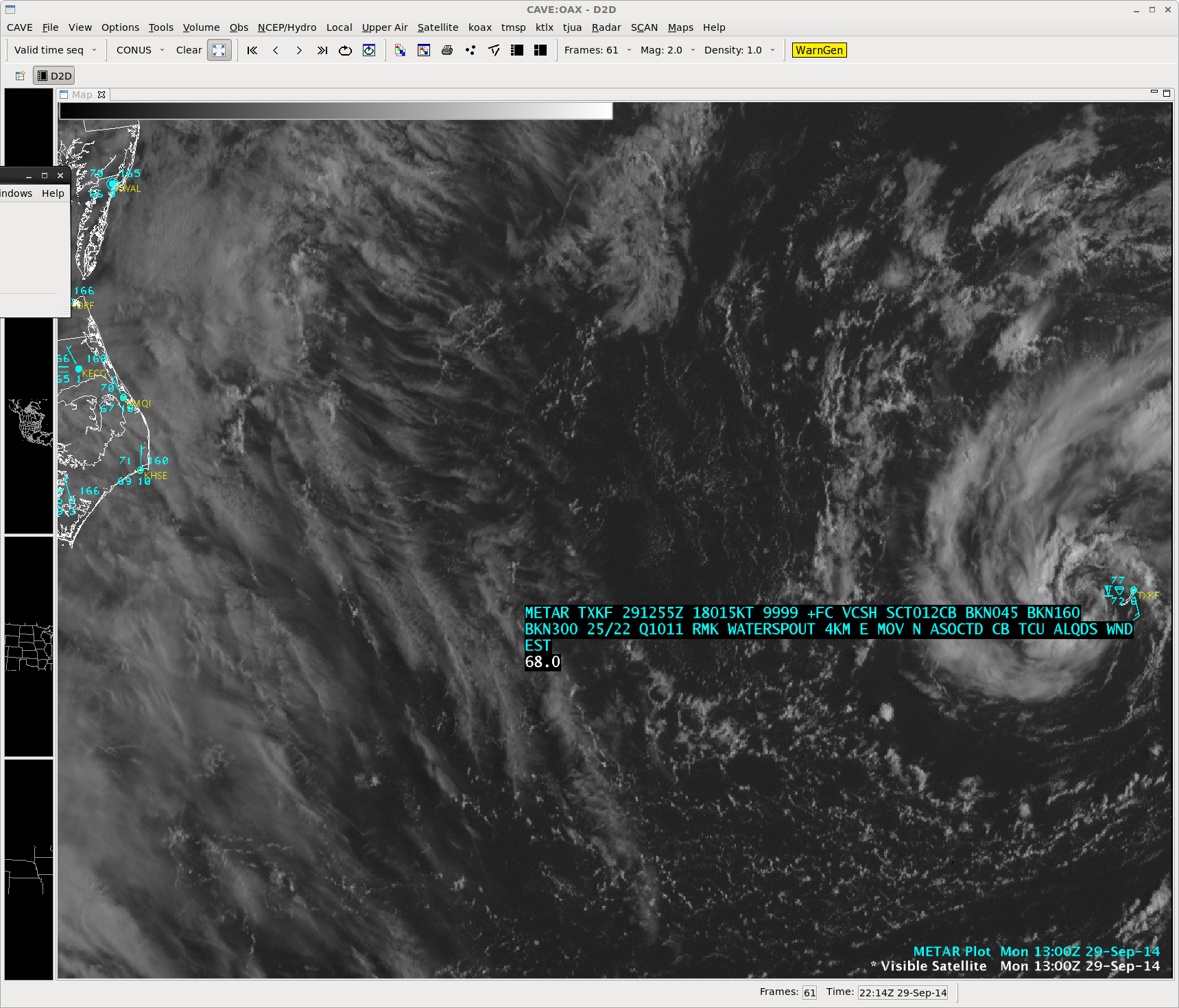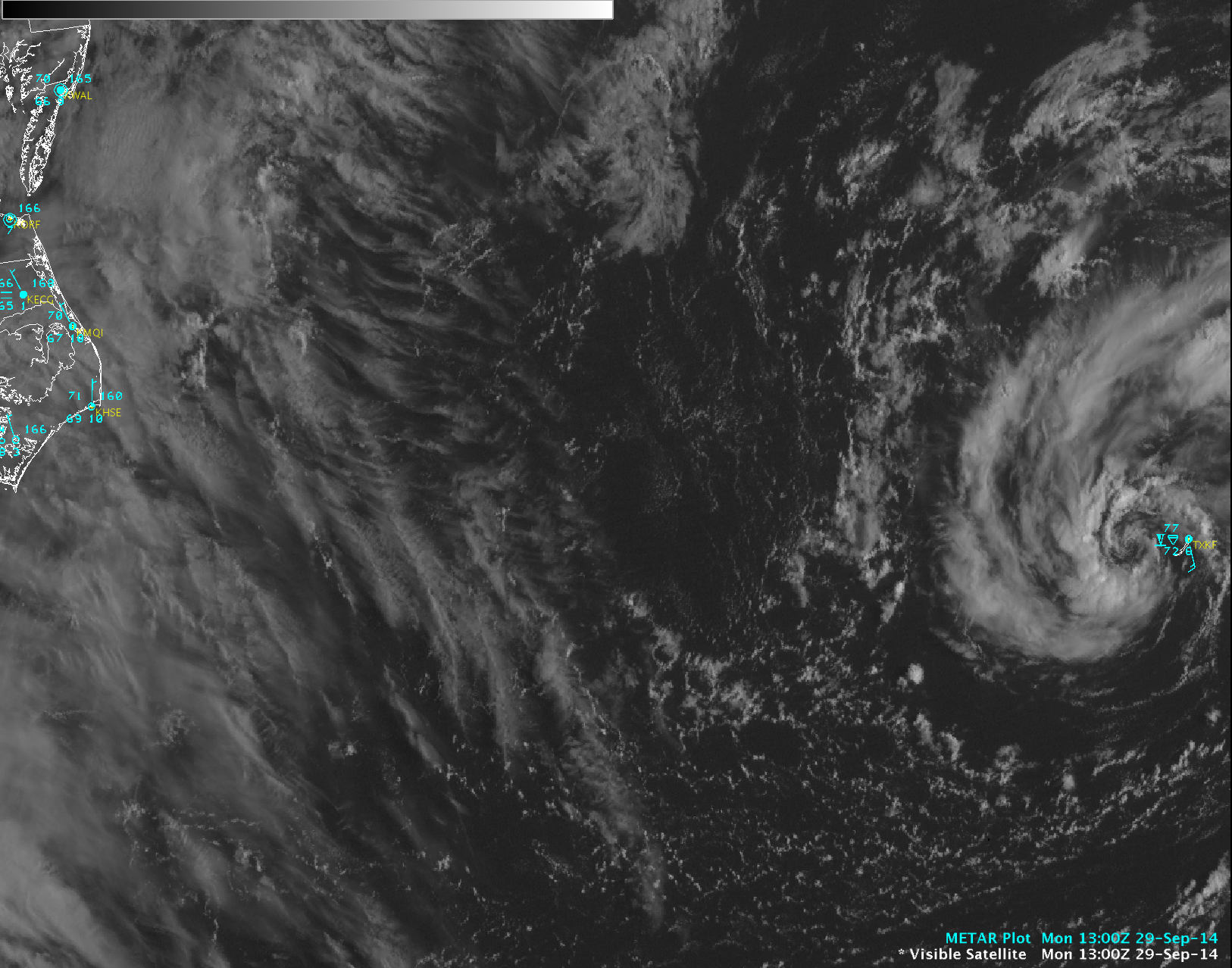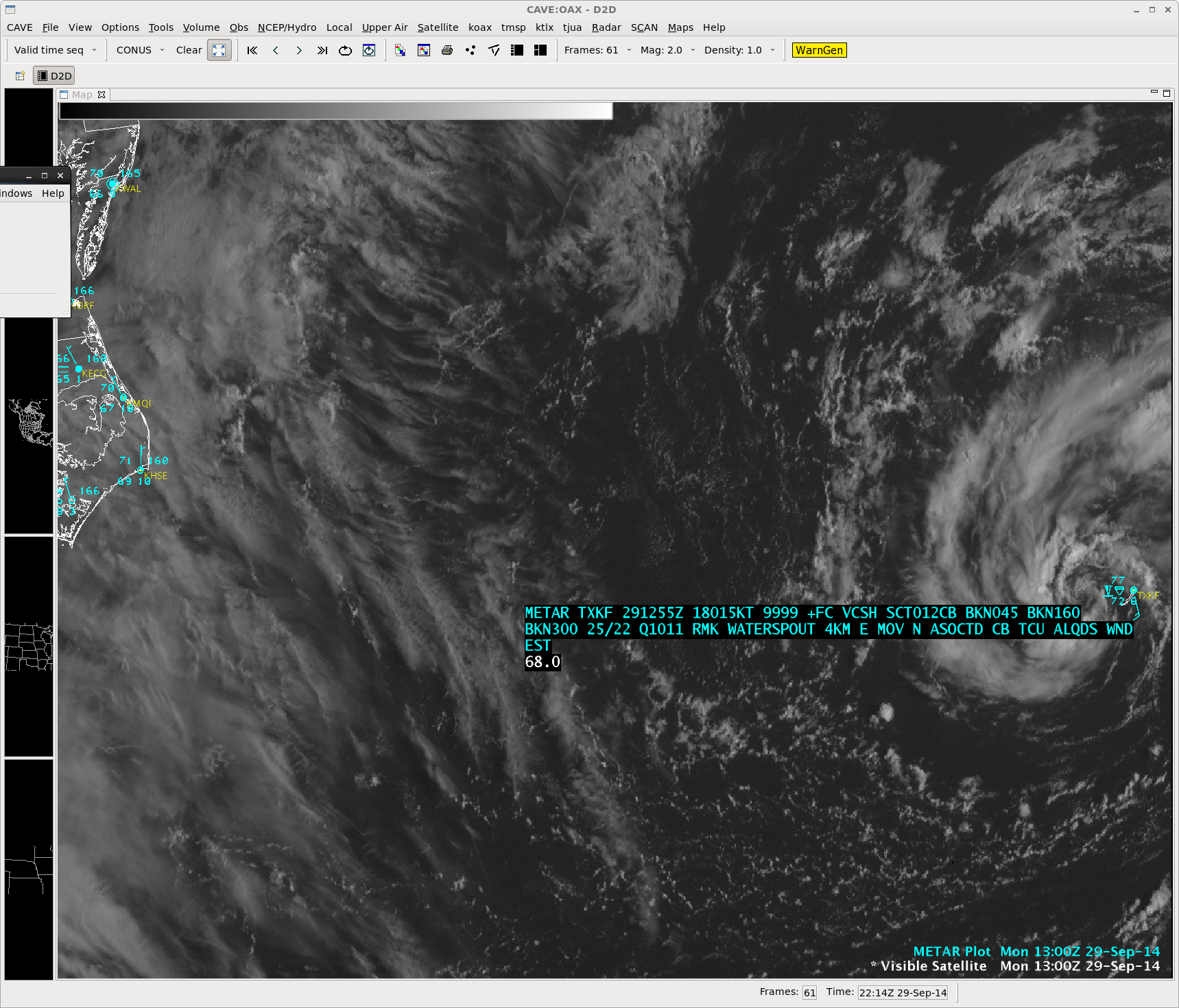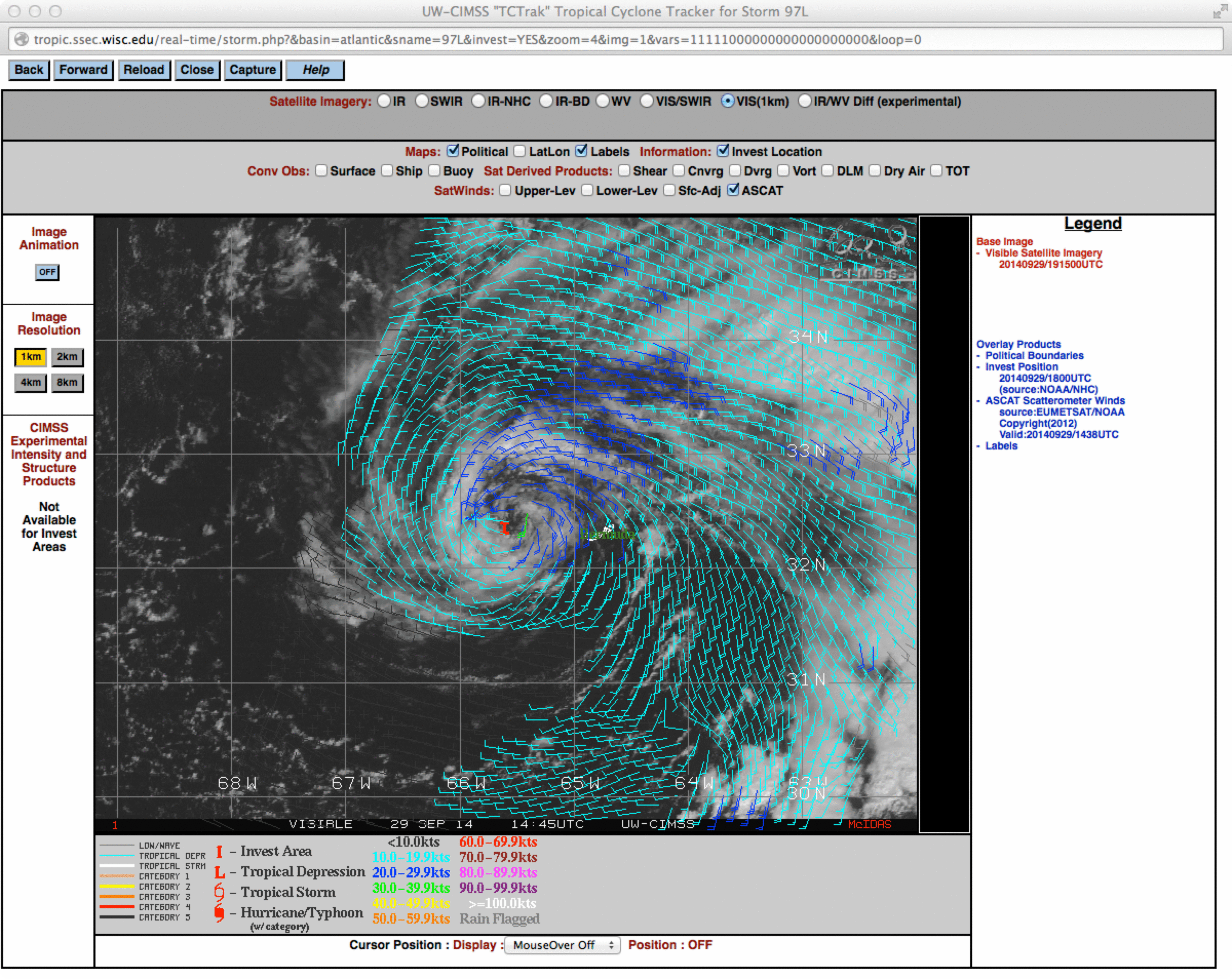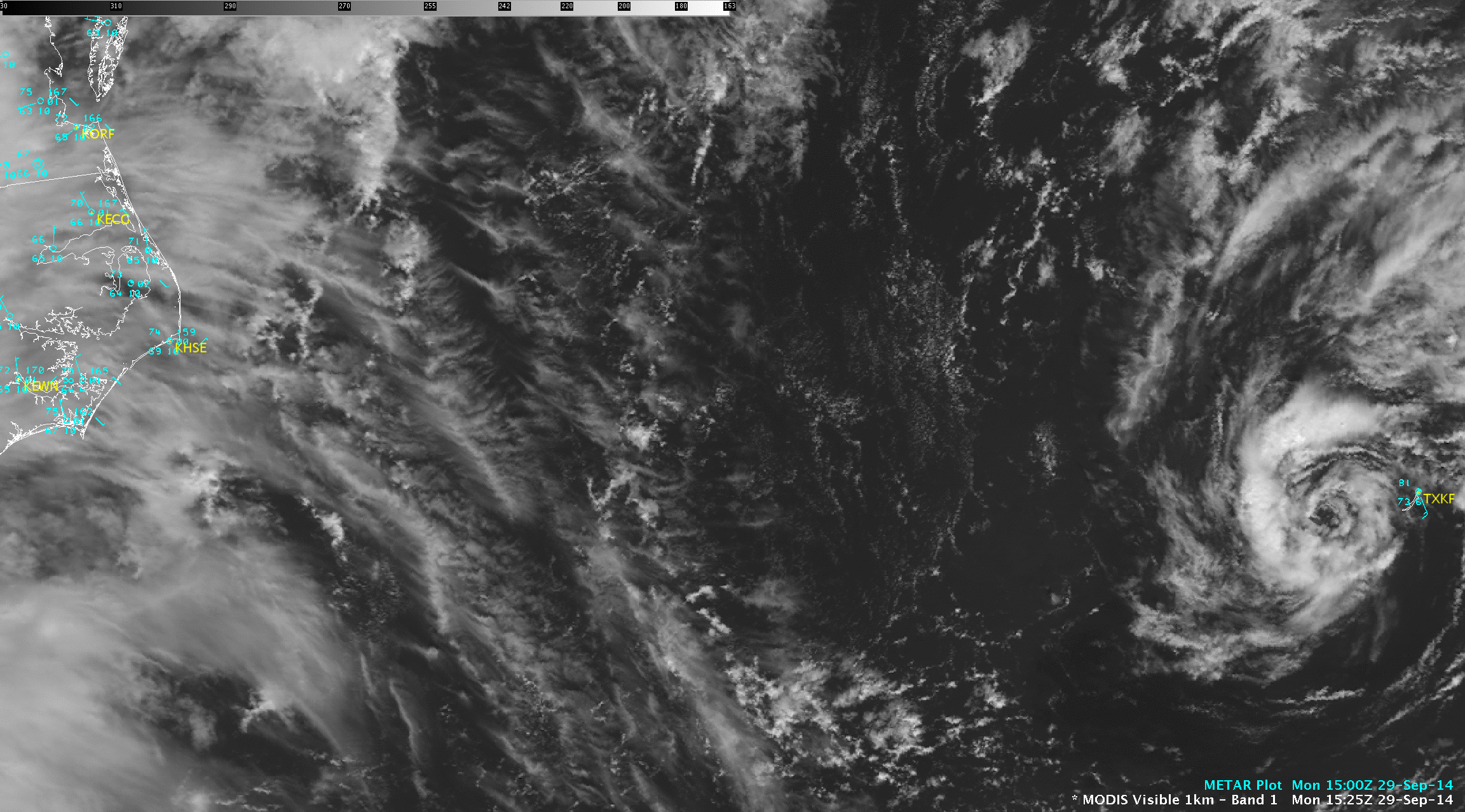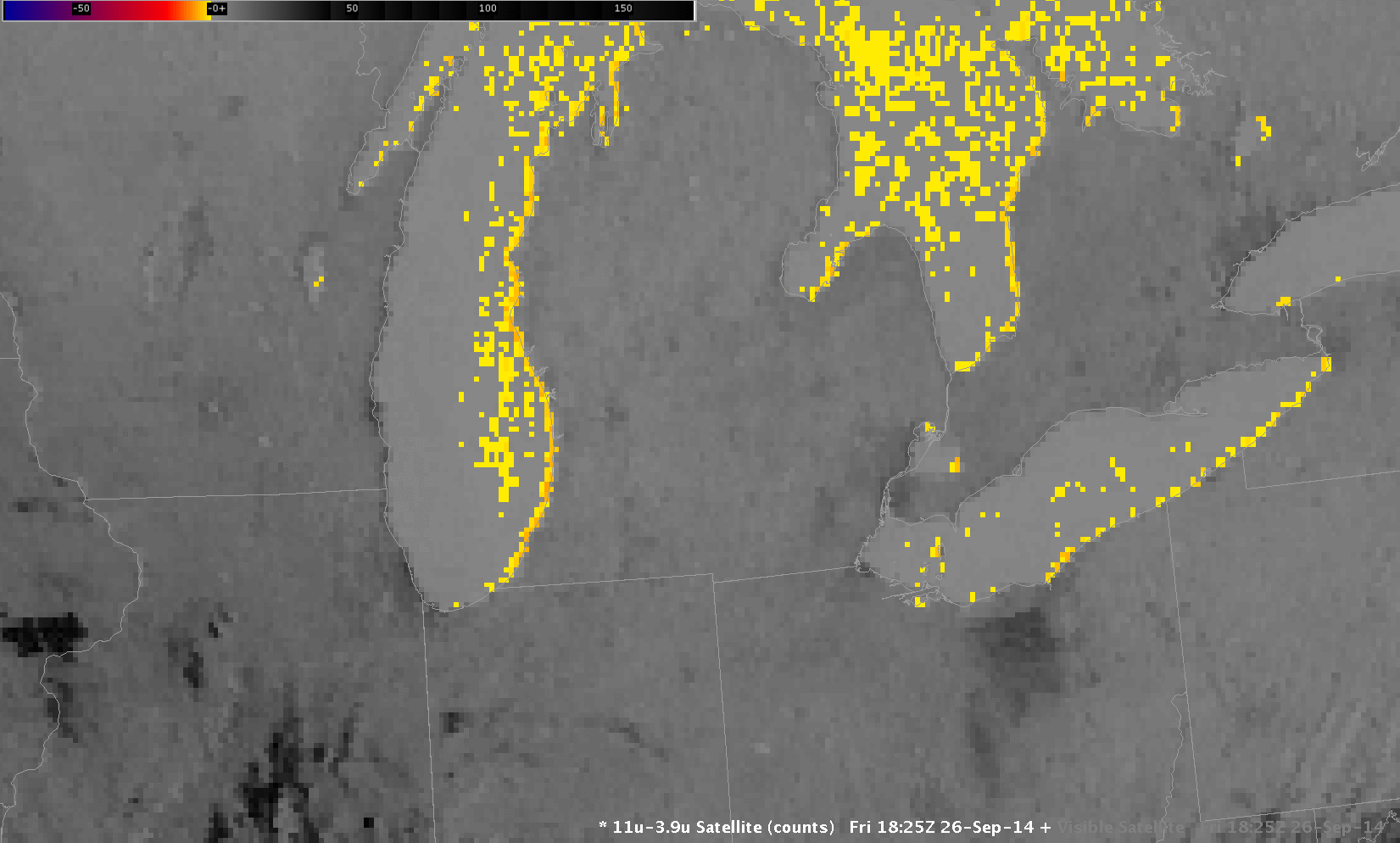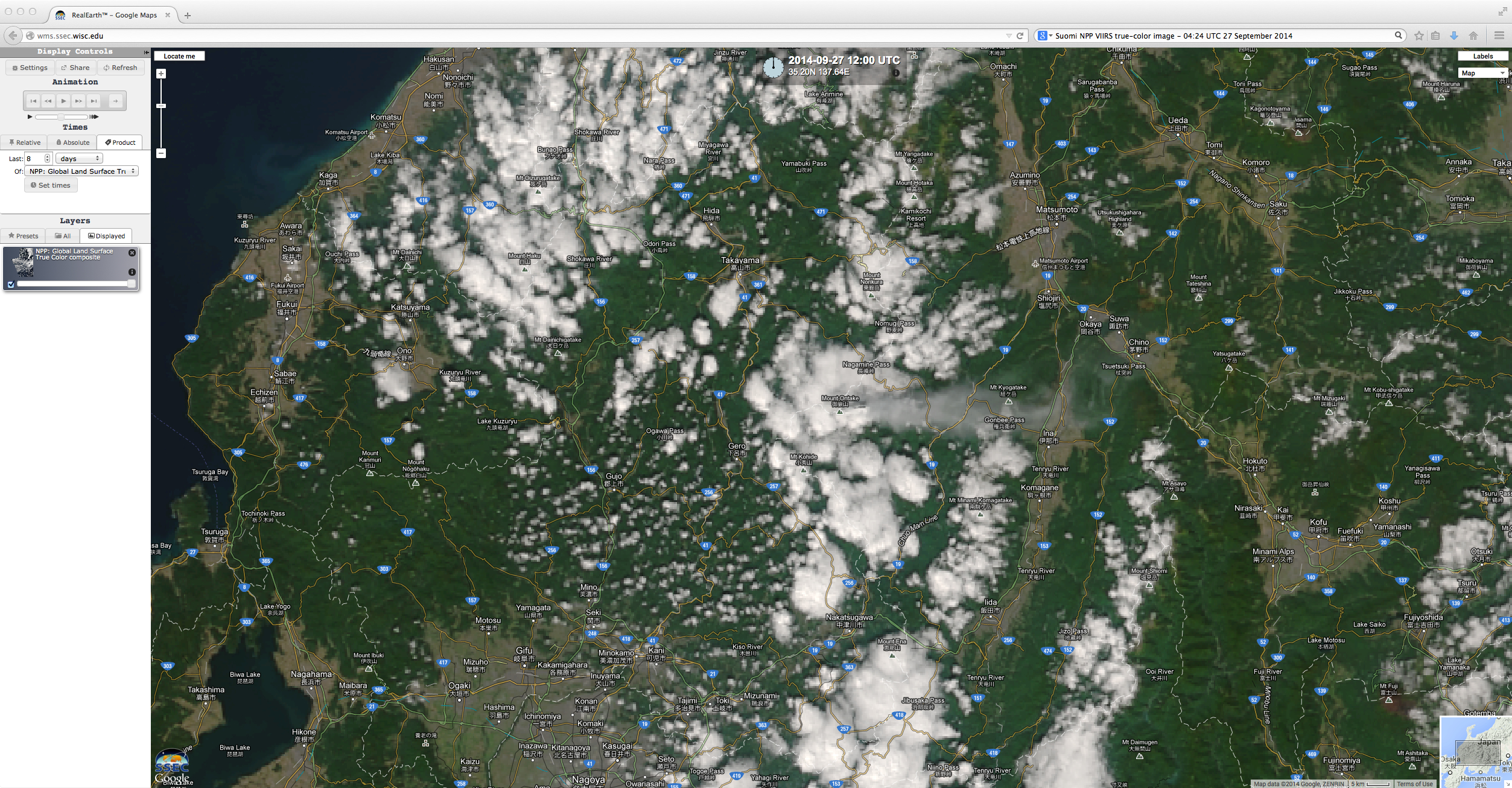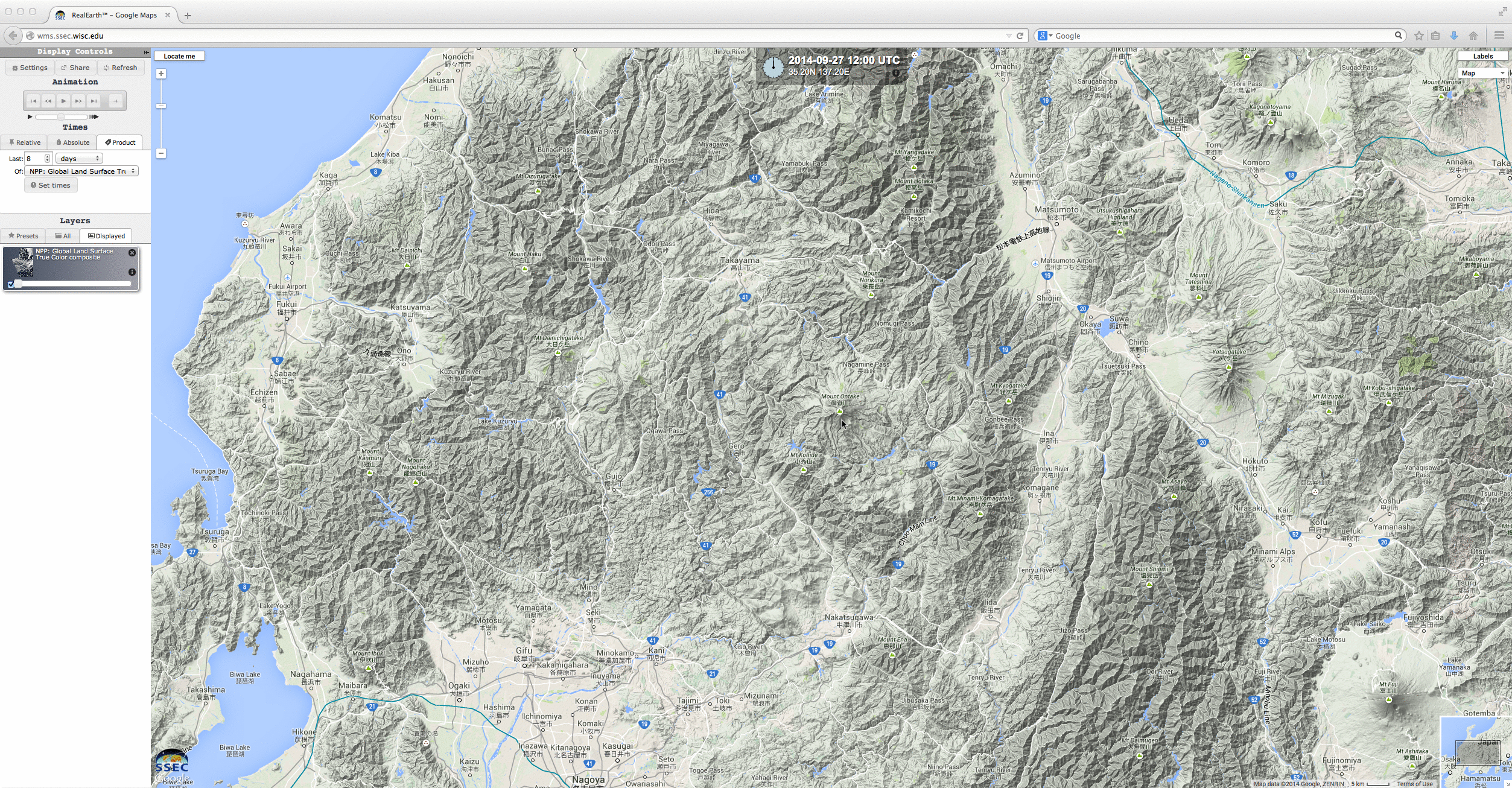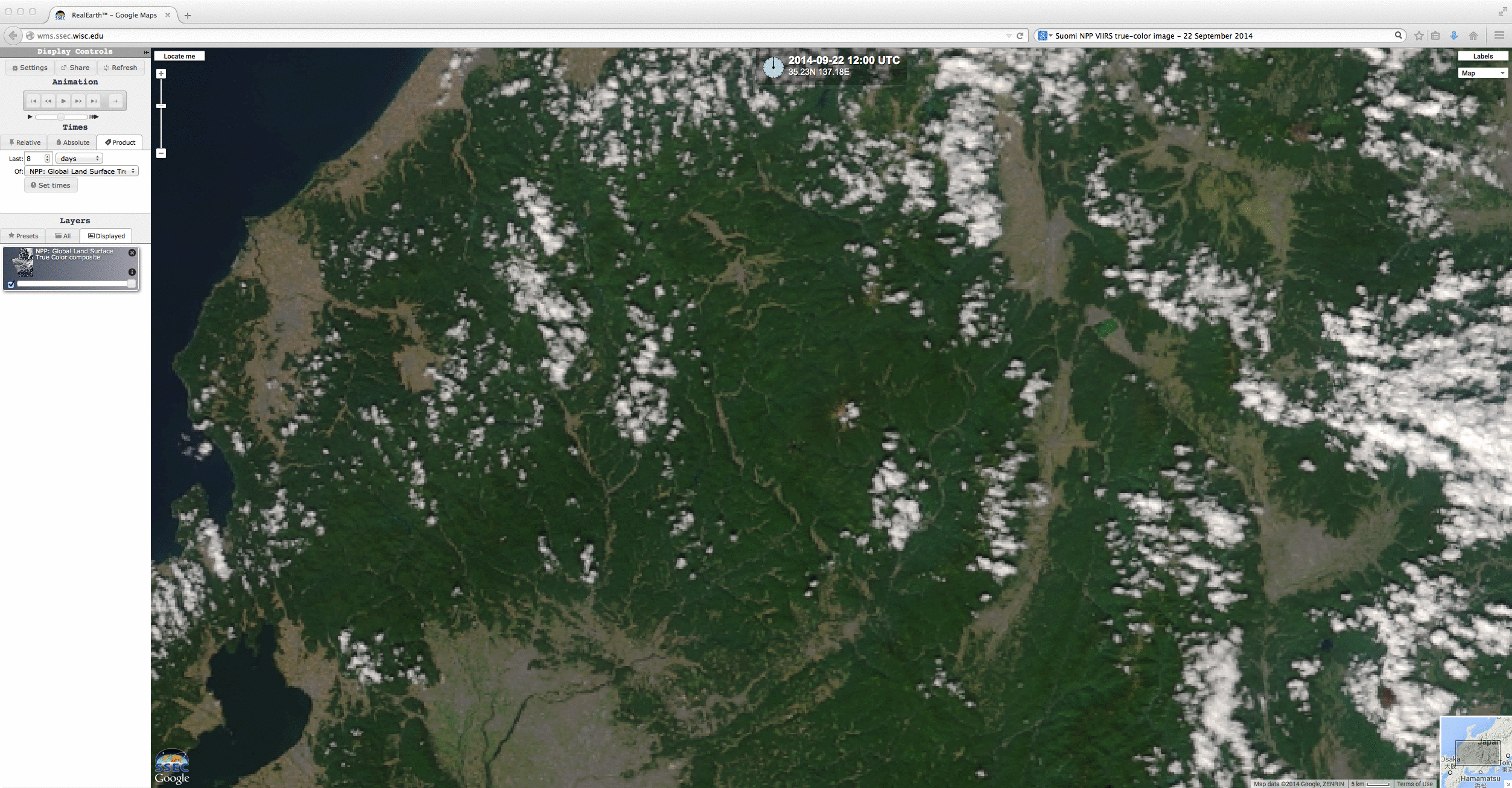
The GOES-15 6.5 µm water vapor channel imagery above showed the development and evolution of a strong mid-latitude cyclone in the eastern North Pacific Basin during the 21-23 September 2014 time period; of particular interest was the development of strong subsidence behind the storm (depicted by brighter shades of yellow),... Read More
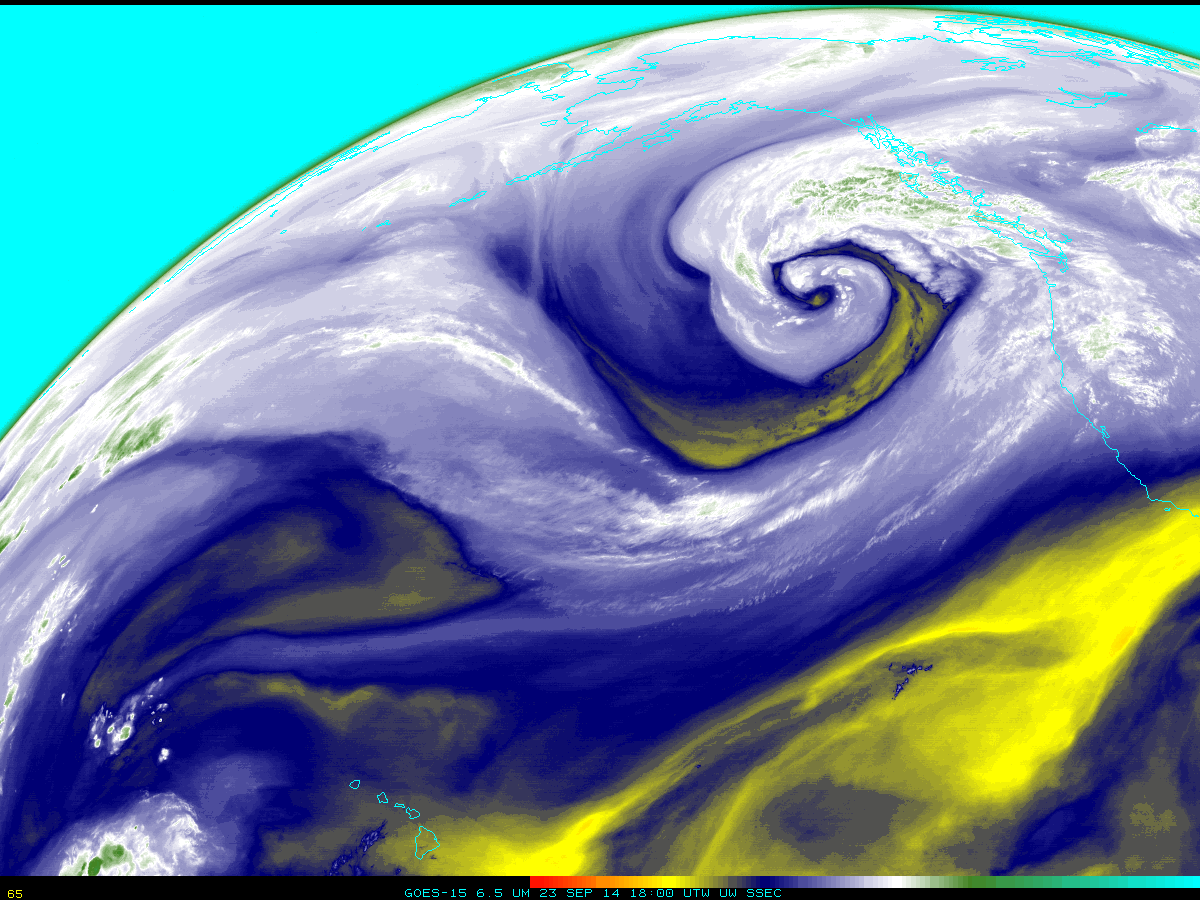
GOES-15 6.5 µm IR channel images (click to play animation)
The GOES-15 6.5 µm water vapor channel imagery above showed the development and evolution of a strong mid-latitude cyclone in the eastern North Pacific Basin during the 21-23 September 2014 time period; of particular interest was the development of strong subsidence behind the storm (depicted by brighter shades of yellow), and also a second jet starting to approach the storm from the west (as evidenced by increasing cold cloud tops in the base of the trough at the end of the animation). A closer view of the storm using AWIPS II imagery is available here. The strong storm had access to abundant sub-tropical moisture, as depicted in the MIMIC Total Precipitable Water animation below.
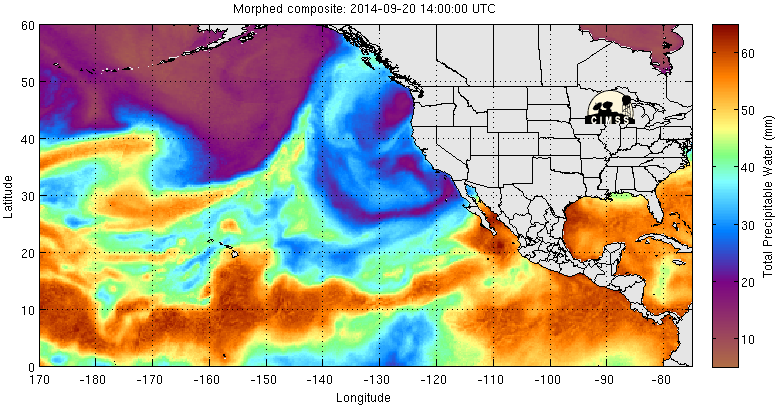
MIMIC Total Precipitable Water (click to enlarge)
The ASCAT Scatterometer that flies on METOP gives routine observations of surface winds over the ocean. A large area of storm-force winds (in red) was depicted in the image below (from 0630 UTC on 23 September), overlain on the GOES-15 Water Vapor imagery.
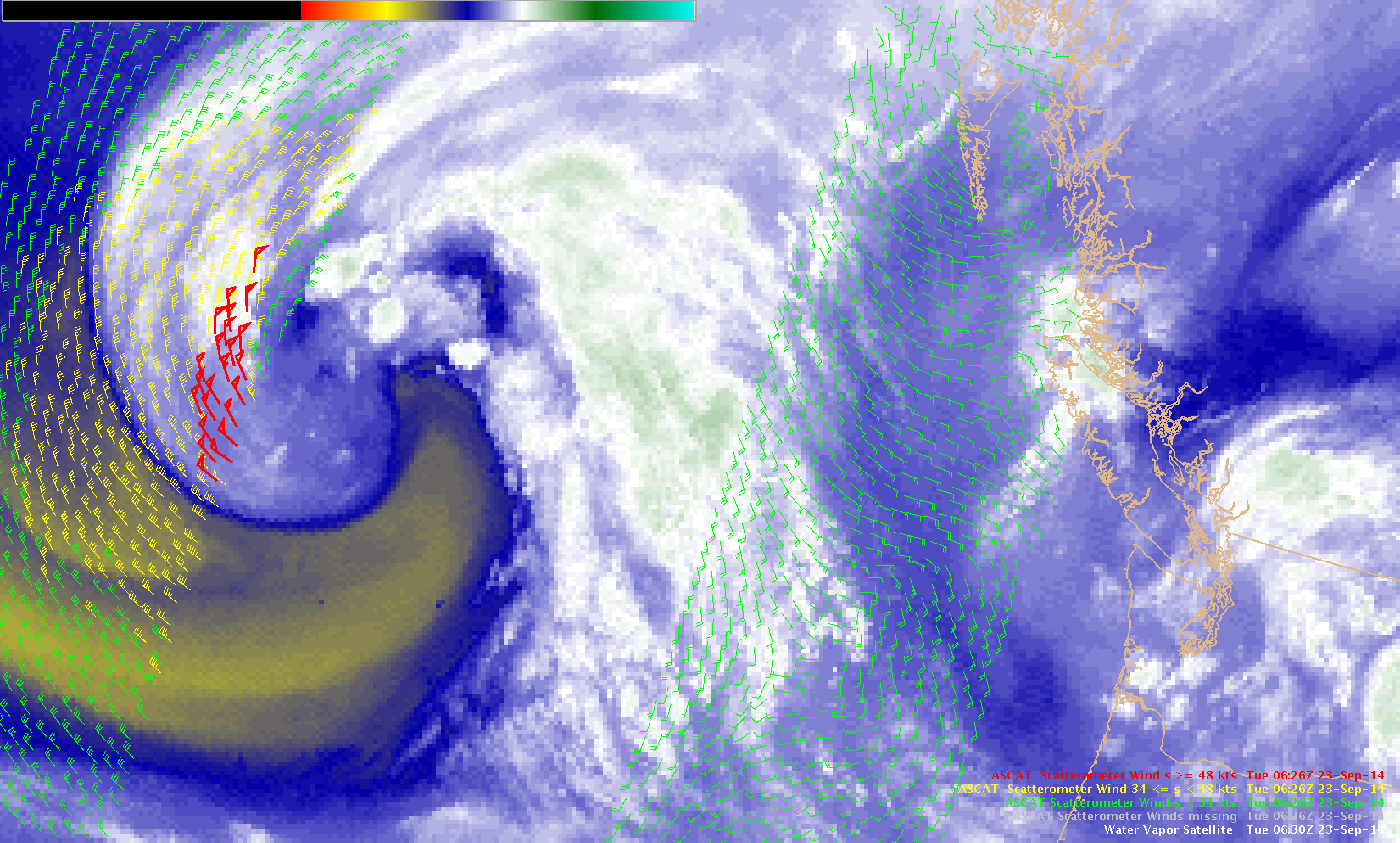
GOES-15 6.5 µm water vapor channel image and ASCAT winds, 0630 UTC on 23 September (click to enlarge)
A comparison of 4-km resolution GOES-15 6.5 µm and 1-km resolution Aqua MODIS 6.7 µm water vapor channel images at 11:30 UTC, below, demonstrated the benefit of higher spatial resolution for providing a more accurate display of the water vapor gradients and various small-scale features (such as transverse banding associated with cold clouds to the north of the storm), along with the polar-orbiter image elimination of geostationary parallax error for more more precise feature location.
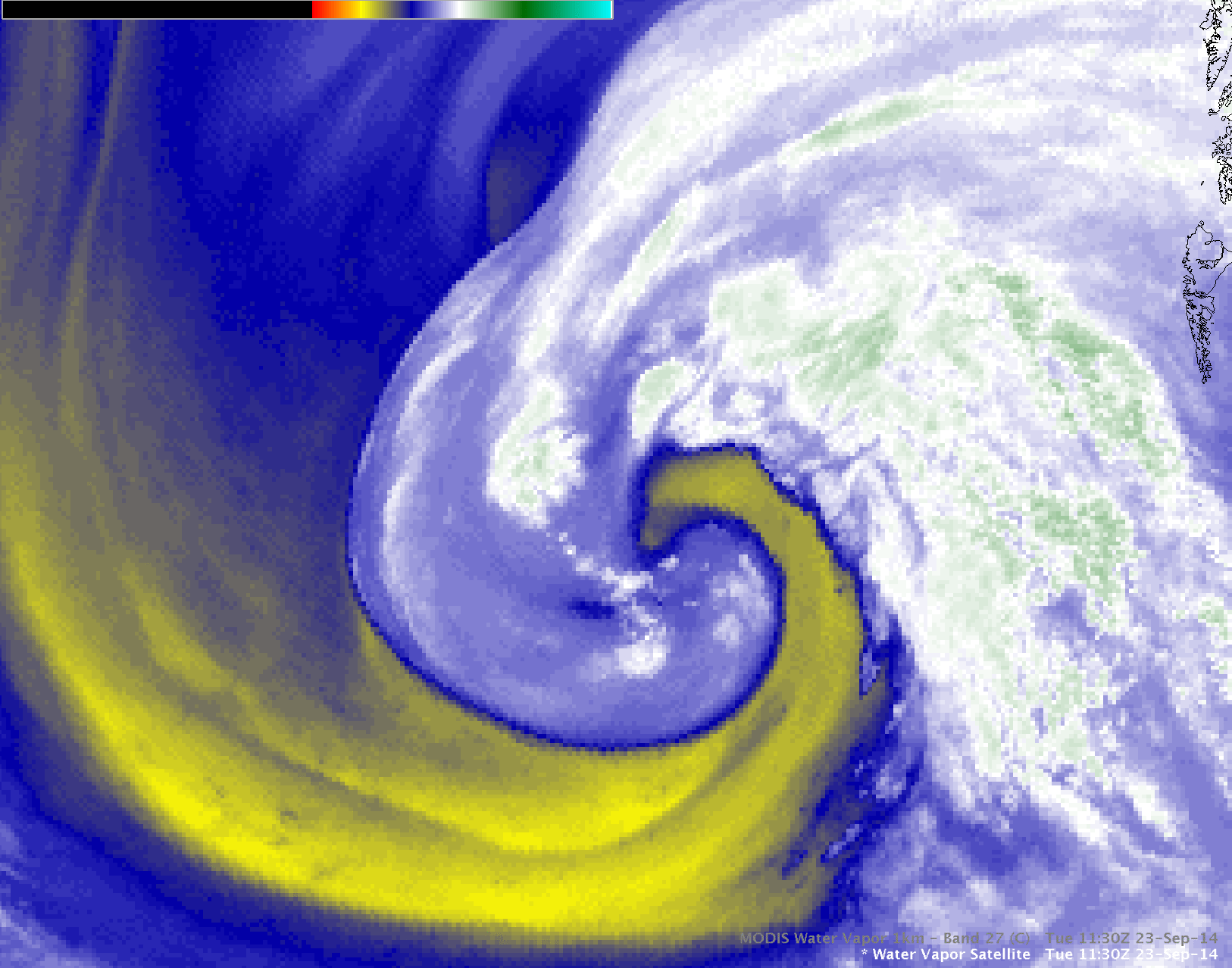
GOES-15 6.5 µm and Aqua MODIS 6.7 µm water vapor channel images
The GOES sounder Total Column Ozone product, below, showed an increase in ozone values (350-380 Dobson Units, darker green to lighter green color enhancement) as the tropopause was lowered in the vicinity of the deepening mid-latitude cyclone.

GOES sounder Total Column Ozone product (click to play animation)
A Suomi NPP VIIRS true-color image from the SSEC RealEarth web map server, below, provided a good view of the lower-level clouds associated with the storm.
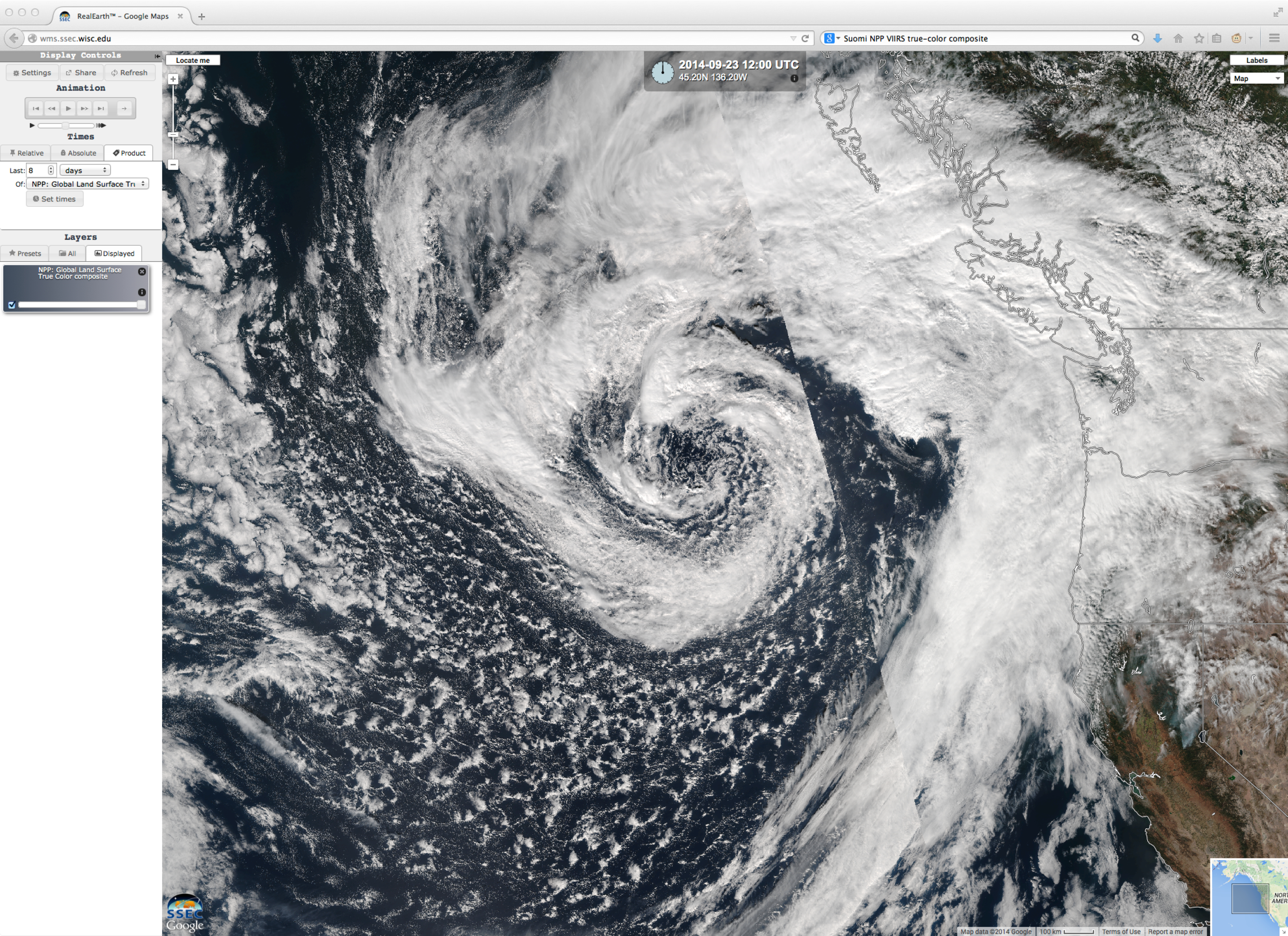
Suomi NPP VIIRS true-color image
For a more detailed analysis of this event from the Ocean Prediction Center perspective, see the Satellite Liaison Blog.
View only this post
Read Less


